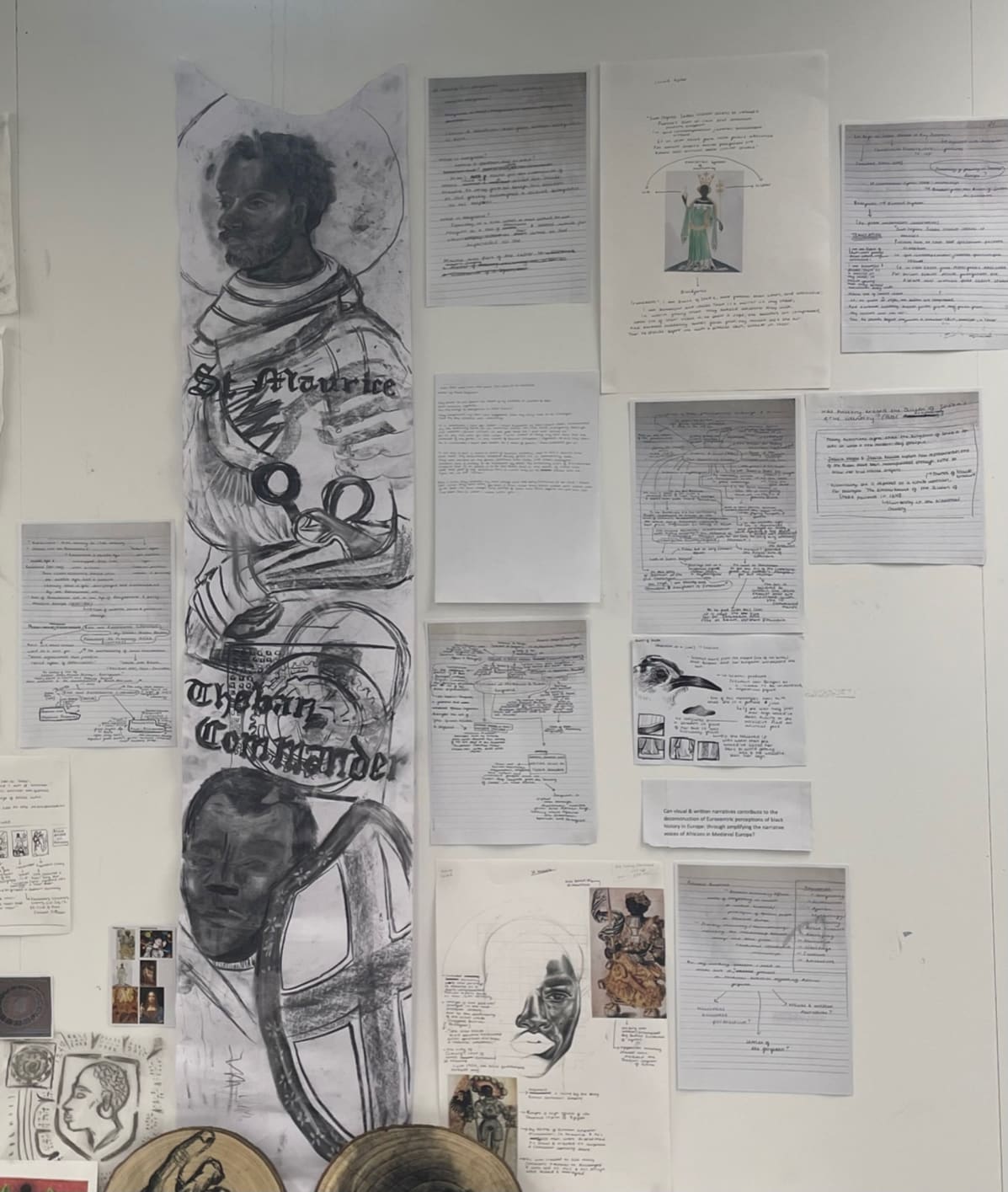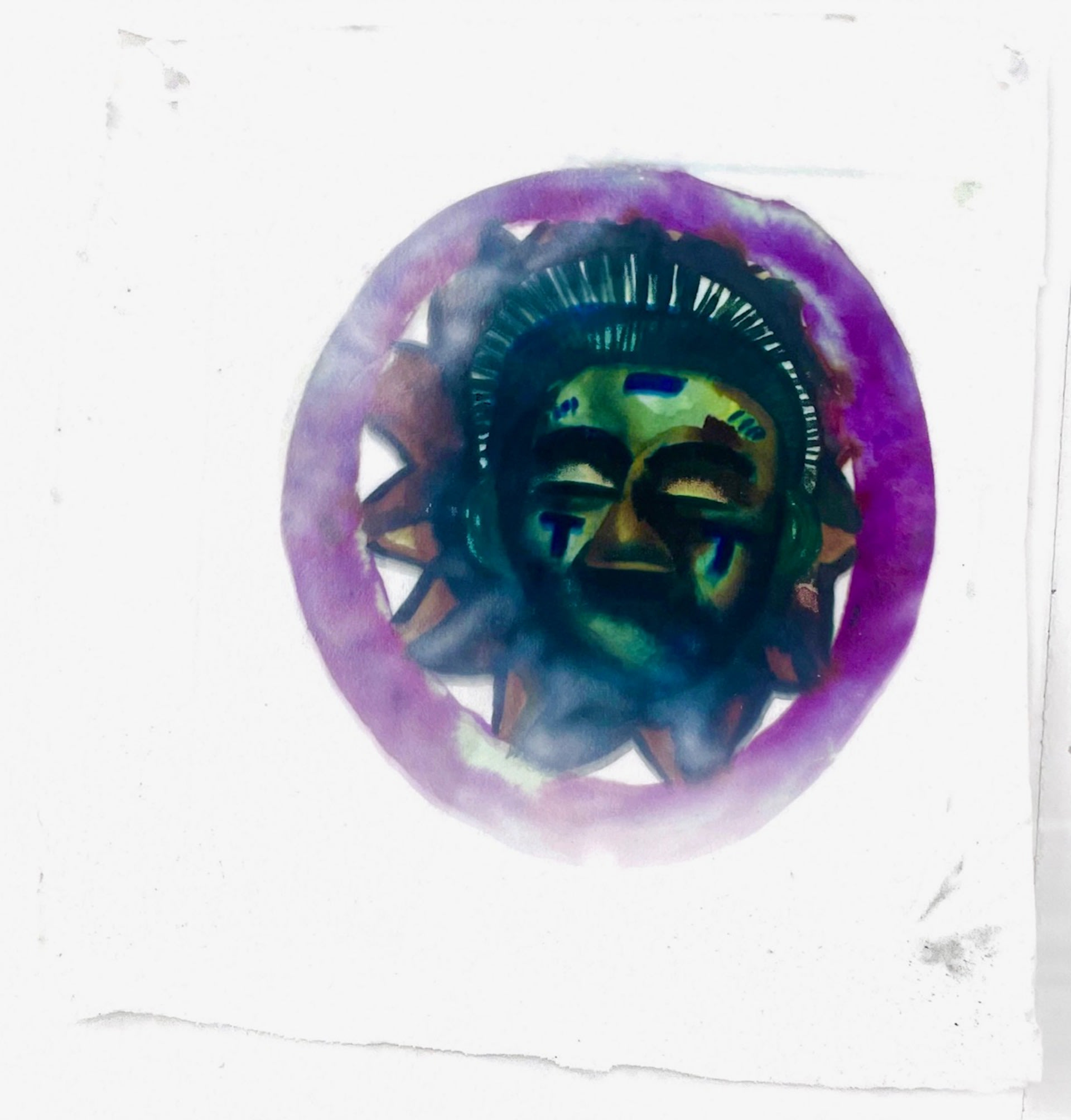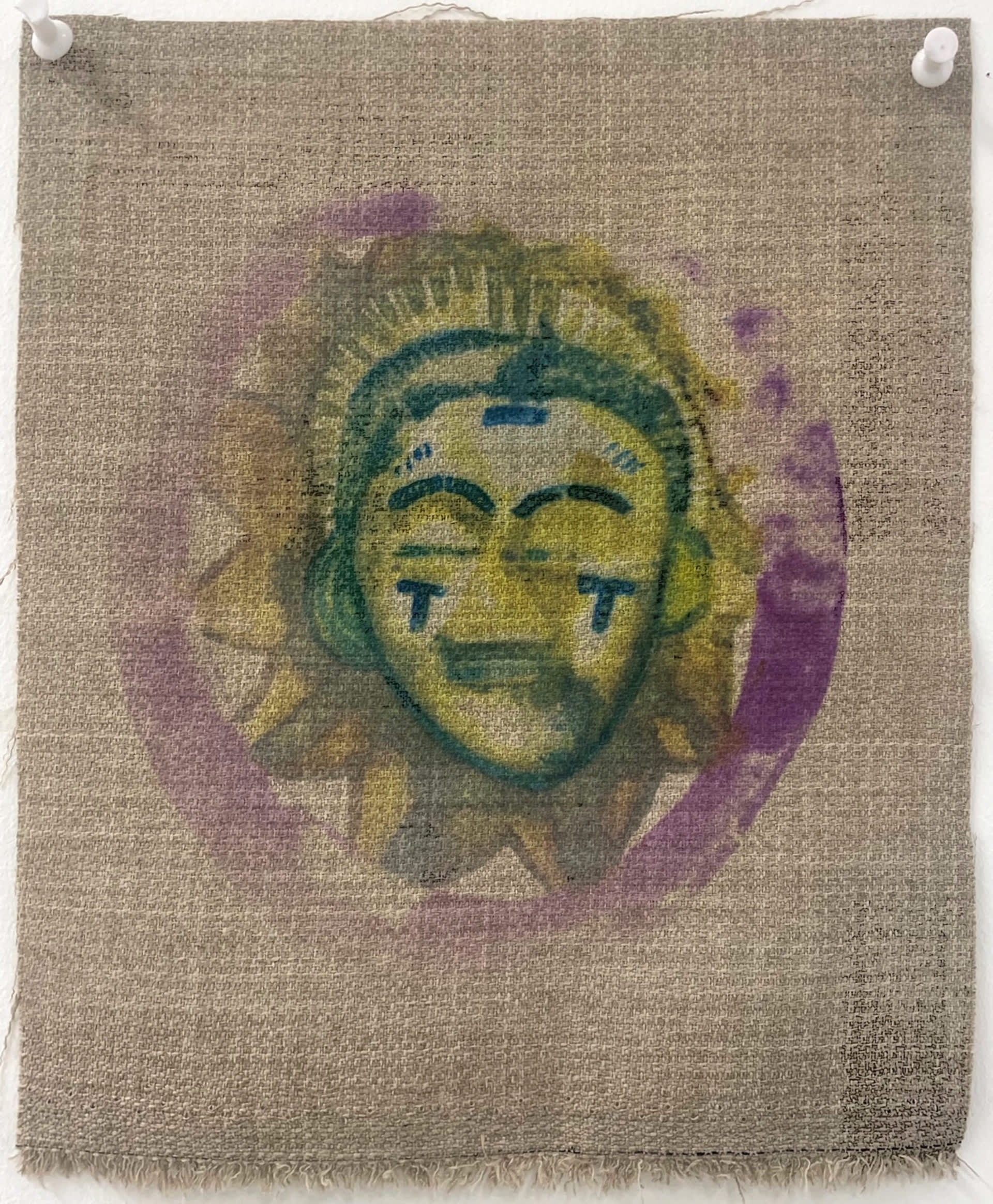Thalia Dougourou is an artist from London, UK. Her practice is based on dismantling Eurocentric perspectives on African history through word and image . The reinforced idea that African history begins at the point of slavery is an extremely damaging narrative as it suggests that black existences is only worth being recorded at the times of European intervention.
Before attending the RCA, Thalia studied BA Illustration at Cardiff Metropolitan university.




















